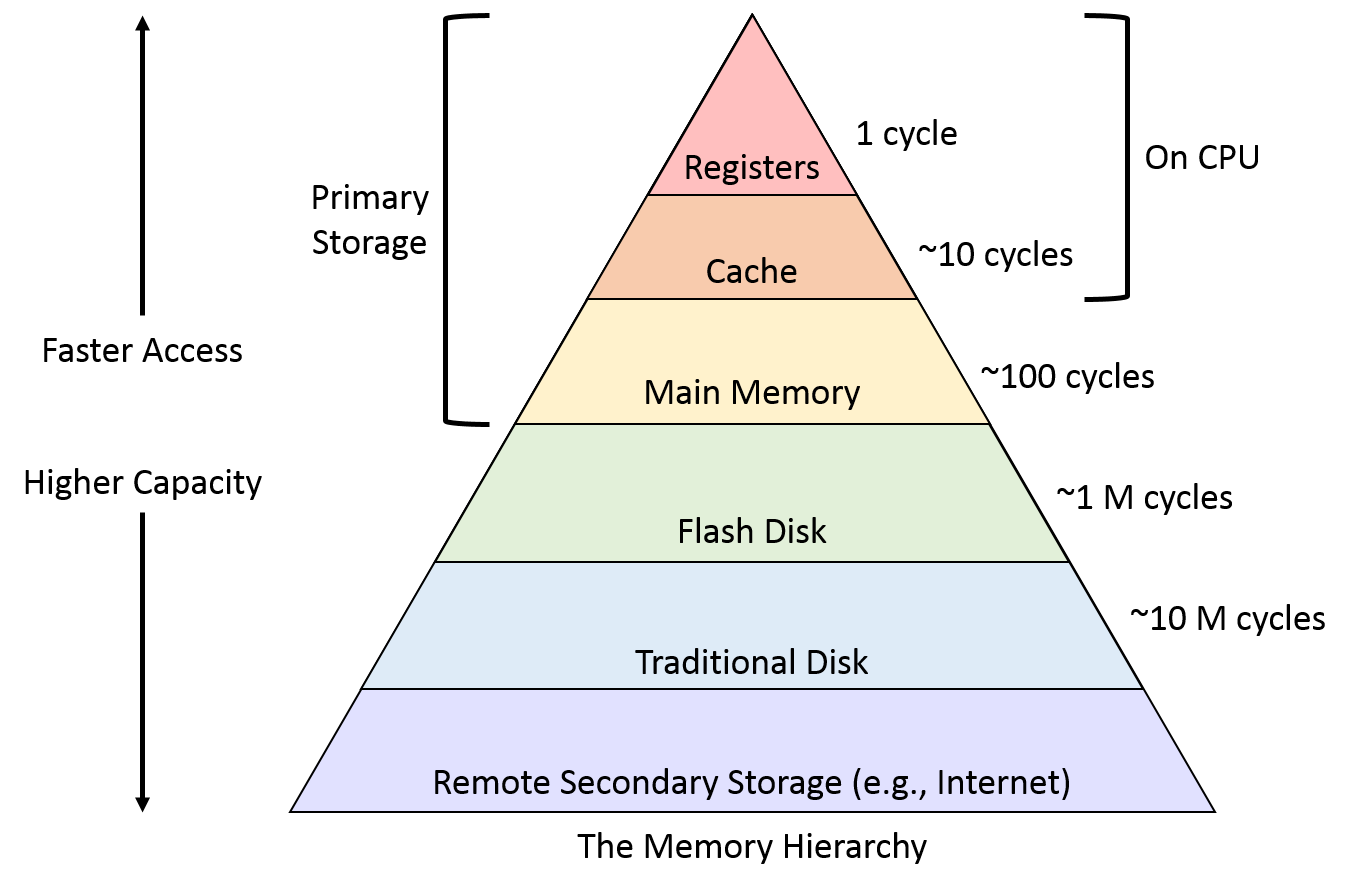Computer Organization and Architecture - Lecture 12
Characteristics of Memory
In computer architecture, memory is characterized by the following factors:
- Memory Speed: Refers to the time it takes to access data from memory. Faster memory is crucial for improving system performance.
- Memory Storage Capacity: The amount of data that can be stored in the memory.
When developers aim to improve one parameter, often another parameter may degrade. This creates a trade-off between memory speed and capacity, for example.
The Memory Pyramid
The memory hierarchy is designed to offer a balance between memory speed and storage capacity. Different types of memory have different speeds and capacities. The general hierarchy includes:
- Registers (1 cycle): The fastest form of memory, located inside the CPU. It provides immediate access to data and instructions.
- Cache (10 cycles): A smaller but faster form of memory, located close to the CPU, that stores frequently accessed data for quick retrieval.
- Main Memory (~100 cycles): Also known as RAM, stores data that is currently being used by the computer.
Below is a visual representation of the memory hierarchy:

Capacitor and Power Supply
A capacitor in memory technology cannot hold a charge indefinitely. That’s why for many types of memory, especially volatile ones, there must either be a continuous power supply or methods to refresh the memory.
Wait Cycles
In some cases, memory access takes more time, requiring wait cycles. These are cycles during which the CPU must wait before accessing data from slower memory, resulting in delays in processing.
Continued to Computer Organization and Architecture Lecture 13